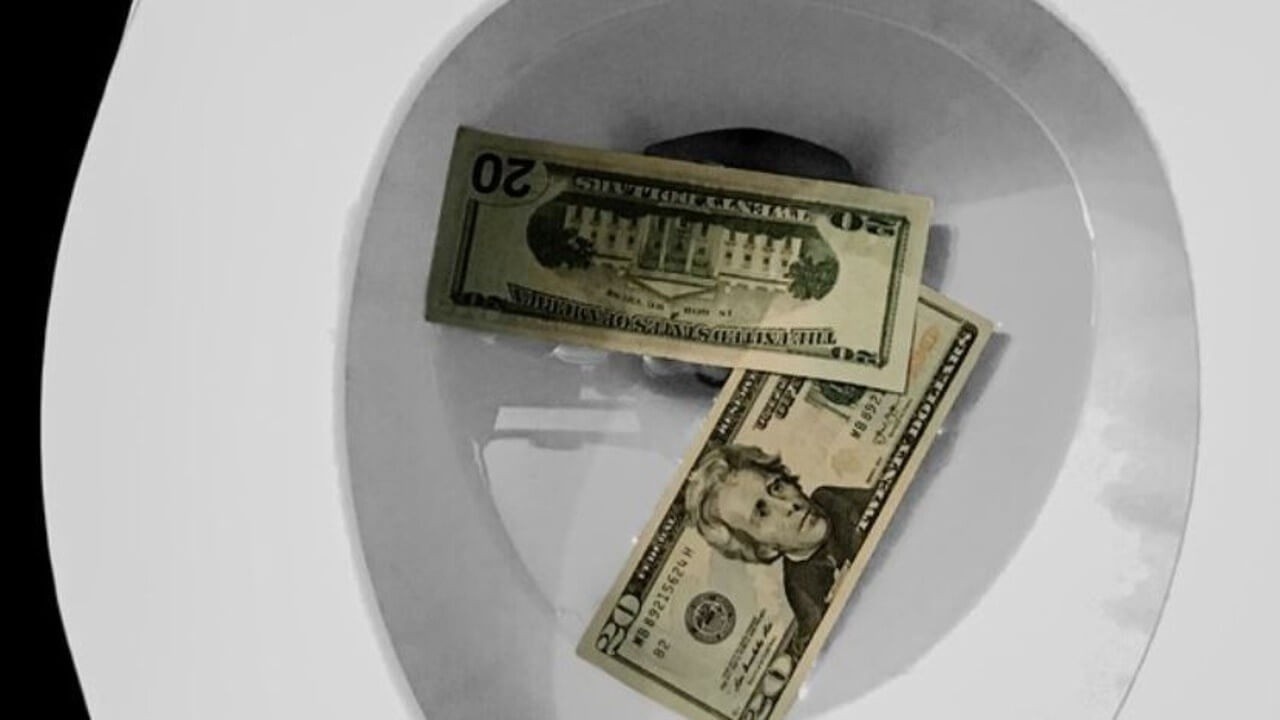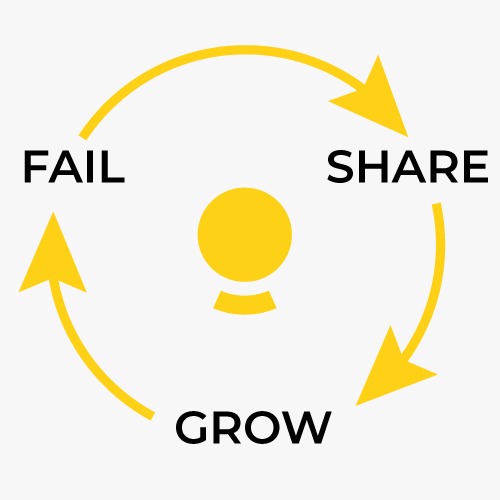
CUT YOUR LOSSES and MOVE ON
Mar 11, 2021Imagine you have bought tickets for an open-air show of your favorite cabaret artist. You have chosen the better category and spent a lot of money on it. But 2 hours before it starts you feel tired, get a runny nose and a headache. You would rather crawl under the warm blanket. What do you do?
Do you go anyway, after all, you've waited a long time for it and spent a whole lot of money on it?🤔 Or do you listen to your body because you don't want to risk a flu that will put you out of action for a week? Difficult, isn't it? ❓
On top of that, the weather is unstable and gray rain clouds don't make you feel very optimistic. But you've already got the tickets. What would you do?
One thing is clear: 👉You have already spent the money for the tickets and so close to the beginning it is quite hopeless to find someone who will buy them from you. It's gone forever and you won't get it back. Shouldn't really be the deciding factor for your decision, right? But it kind of does, doesn't it?
INVESTMENT or LOSS
It's not easy to stay in the HERE and NOW and with what's really relevant to you. It feels more like an investment than a sunk cost. An investment you'd like to see paid off. This also explains why people sometimes order too much food and then eat it all just to "get their money's worth."
Similarly, a person may have bought a movie ticket or concert ticket and then let the bad movie or piece of music wash over them just because they feel they have to attend it since the money has already been spent.
It's even more dramatic when it comes to studying. You start a course of study and realize in the fourth semester that the subject doesn't really engage you and you won't use it professionally. What do you think happens then? Most people continue to study because, after all, they have already invested a few years of time.
People commit the "sunk cost" fallacy when they continue a behavior or endeavor because of previously invested resources (money, time, and effort) (Arkes & Blumer, 1985). This fallacy is strongly related to our loss aversion and status quo bias, which often arises from continued commitment.
📌What does this have to do with my topics of change culture and behavioral design?
Quite a lot! Just this week I had another conversation with a potential client. We had an inspiring conversation, and he was more than enthusiastic about our approach. We were in 100% agreement on everything. I made it clear to him, "If you want your employees to go in new directions and behave differently, we need to change some structures and processes to enable people to change in the first place." He agreed with this point as well and it was crystal clear to him. But finally, he replied with discomfort, "We just put this in place 4 years ago with a lot of effort and cost. We can't change that now."
Sunk cost fallacy‼ Even though we know that continuing like this won't do any good, we keep going anyway.
🤷♀️ I shrug, turn around and move on with those who are willing to recognize and overcome this trap. Or do you think that's arrogant? What would you do in my place? That “urgently” needed change will not come this way. Instead, another loop of unnecessary investment for deficit-oriented training with no visible and certainly no sustainable impact.😧 "I'll get back to you in a year or two," I finally replied.
Is moving forward possible without changing anything?
Somehow, I don't quite understand that. Let me put it another way. Let's transfer the situation into something suitable for everyday life. Maybe then it will become clearer.
Let's say you want to live healthier and decide to lose five kilos. Your plan is to stop eating sweets and chocolate in the evening on your couch. I, as your Behavioral Design Coach, support you in your plan and recommend as a first step to remove all sweets and chocolate from your household and instead get lower calorie snacks or fruit (depending on your preference). You understand what I am saying and also realize that it won't work without this step, yet you are hesitant and unwilling to give them away. After all, that would be a waste. What do you think: will you achieve the desired goal?
Or even more absurd. Imagine you are a city planner and 20 years ago a road was built so that people can travel a certain distance from A to B. Similarly, many organizations in the industrial age created suitable structures and processes in their organizations so that their employees could reach a certain destination. Years have passed and now you have gained new insights and your strategy has changed. You recognize a different, faster and better way and you want your employees to follow this new path. It is similar with change processes - the new goal is a more attractive one. At least it should be. But you leave the old path in place, and you also do not take the time to concrete the new path, but temporarily lay it with wooden planks. After a few days and weeks, you wonder why your employees are resistant to change and still take the old way. 🤷♀️
Is that logical? Can anyone explain it to me? And so, I decided to write my frustration off my chest and give you some tips on how to overcome the "Sunk Cost Trap".
4 WAYS TO OVERCOME THE TRAP
The Sunk Cost Bias - I first read about it 7 years ago in an entertaining booklet by Rolf Dobelli, was deliciously amused, and of course caught it myself. That's the nice thing about all the bias traps, that they make us so human. Sunk Cost is a thinking trap that can cause people to literally waste their entire lives - something my team and I have experienced regularly when mentoring leaders. But there is another way. If we become aware of this thinking trap, much has already been accomplished.
1️⃣ RECOGNIZE the irretrievable loss
Recognize that the money spent, the energy, the time... is irretrievably gone. Nothing will bring it back. And if you want to punish yourself and suffer extra-long, it will not come back either. On the contrary - you will prolong your suffering.
I am aware that this is easier said than done, of course. And if it's so hard for us to throw away a concert ticket, what does it look like when it comes to long-term relationships that no longer work? We want our efforts to be worthwhile. And we definitely do not want to feel that we have spent something in vain - money, time, effort.
Stop yourself from spending resources of any kind on bad decisions that you can no longer improve. Cut your losses and get on with what really matters.
2️⃣ FAIL > SHARE > GROW

Peer pressure, constant observation and evaluation... difficult framework conditions. Admitting losses makes us feel like a loser. None of us like that. And after all, we want to be someone who can be counted on. That's a lot of burden to overcome.
Translate failure with learning. Think for a moment about how you learned to walk. Or were you a child prodigy? Got up at 11 months and you could already keep balanced steps without landing on your pampers? Stubbornly sticking to something is the real failure here. Start analyzing your trial and error, learn from it and share it with others. Be proud of what you have realized and how you have developed a Growth Mindset
3️⃣ Change the PERSPECTIVE on your COMMITMENTS
The greater a commitment we have made, the more difficult it is to let go. Not only is this a human trait, but also that we rush into things confidently and enthusiastically and commit or have scrutinized the circumstances, (in organizations often reinforced by peer pressure and deadlines). 
We humans tend to have the status quo bias. We like to stick to the current course and the tried and tested. Additionally, commitment is a highly emotional attachment. Try changing your perspective. If you were a different person and had no stock in the game, how would you feel about the situation? If you look at the matter detached from your personal involvements and emotions, then you can gain a clearer view of things.
4️⃣ KEEP your GOAL in mind
In everyday life, it can happen that we get bogged down in details and side issues. Additionally, stress and time pressure are conducive to losing sight of our long-term goal.
Get clear on your goal. Professionally, it always pays to visualize your goal. "Seeing is believing" and will keep you on track. So, if your original goal was to watch a comedy and have fun with friends while doing it, but after 10 minutes in the movie theater it turns out to be neither funny nor fun.... then get out. Your goal was not to kill 2 hours of lifetime in the cinema. What a waste. Be worth it to yourself. Take care of yourself and have fun.
As I write this article, I'm remembering a trip to the movies 18 years ago where I managed to escape the Sunk Cost. What was decisive for my decision, I ask myself today. I confess - in my mid-20s I was a big Bruce Willis fan.😊 I knew some of his comedies and of course the "Die Hard" movies. And then I saw a movie with Bruce Willis in the cinema program and assumed that it would be a funny and entertaining evening. However, after 15 minutes in the cinema, I realized that my goal of having fun and entertainment would not be achieved that way. I perceived the movie as extremely cruel, left the cinema hall and decided to spend a really entertaining and fun evening with my friend.
So, what did I do?
- I realized that it's better to write off the money for the movie ticket than to endure another 1.5 hours of cruelty.
- I recognized my "Oh, a movie with Bruce Willis" assumption as a guarantee of an amusing movie night as a failure and learned from it to read the movie description and reviews in advance next time.
- I questioned my "loyalty" to Bruce Willis (sorry Bruce, I still love you😘) and found out that I don't have to force myself to like all movies with him to be loyal.
- I kept my goal in mind that I wanted to have a fun evening.
Cut losses and move on! How are you doing with that? Support needed? Of course, not with movie selection😆, but when it comes to more important and big business decisions?
I'm Sabine Caliskan, Behavioral Design Architect. I'm here to support you in realizing your sunk costs and leaving them behind so you can focus on your important goals. Let's chat here in the comments section 👇 or if you prefer it more personal, here: https://bit.ly/3qlHbaN






